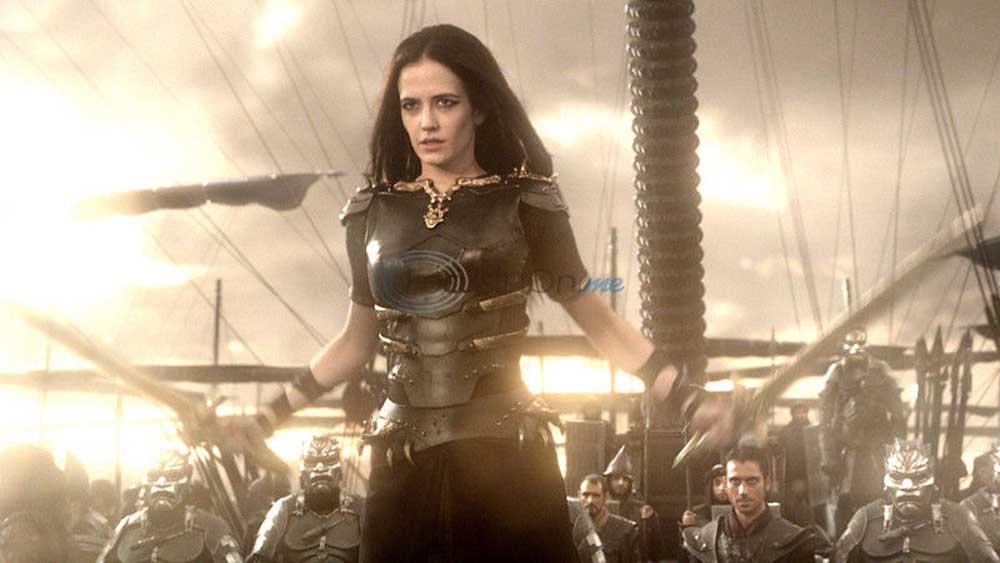Eva Green’s ‘fierce and feral’ performance dominates lackluster ‘300’ sequel
Published 12:06 pm Friday, March 7, 2014

- Eva Green dominates the screen as Persian naval commander Artemesia in "300: Rise of an Empire." -- Courtesy photo
BY STEWART SMITH
ssmith@tylerpaper.com
It’s easy to find fault in the works of director Zack Snyder and comic book visionary Frank Miller. But after watching “300: Rise of an Empire,” it’s readily apparent that it takes more than mimicry to replicate what made their work so special.
“300” is the film that launched Snyder’s career into high gear, and for good reason. His approach to action filmmaking was fresh and exciting (and spawned plenty of imitators) and his depiction of Miller’s trademark visual style was both impressive and distinct. He managed to retain the spirit of the style without slavishly copying it frame for frame the way Robert Rodriguez did with “Sin City.” Snyder’s film felt like a legend brought to stylish, violent life. Agree or disagree with its politics and philosophy all you want, but at least Snyder felt like he was trying to say something alongside the gore and choreography.
“Rise of an Empire” has less on its mind than its predecessor (which is really saying something, depending on your view of the original) other than slavishly copying Snyder’s visual style and telling two stories, only one of which is interesting.
It’s actually a little difficult to classify “Rise of an Empire.” The story spans events which transpire before, during and after “300,” effectively making it a prequel, sequel and sidequel (shut up, I’m making it a word). Xerxes (Rodrigo Santoro), devastated by the death of his father King Darius at the hands of Greek commander Themistokles (Sullivan Stapleton), is manipulated into becoming a god king by Artemisia (Eva Green). Artemisia is basically Persia’s shadow queen and whispers platitudes and orders into Xerxes’ ear, coaxing him to do her bidding under the guise of an advisor. She wants nothing more than to destroy the Greeks and thus has Xerxes rally his forces to once more march forth and conquer.
This is by far the most interesting thread of the film. Artemisia is as fierce and feral as females come in cinema and she’s more than a force to be reckoned with among legions of men who dwarf her in physical stature. She’s both a cunning warrior and a canny commander, leading Xerxes’ entire navy. But she’s also intriguingly developed as a character as well. A former Greek slave who managed to rise through the ranks of Darius’ military, she lives for nothing more than to annihilate the country that destroyed her life and family.
All of this is driven home thanks to the delicious performance delivered by Eva Green. There’s a lust in her eyes, not for men or riches, but for power and blood. Artemisia relishes each time she lets fly an arrow or swings a sword because it brings her one inch closer to driving the Greeks further beneath her heel. Green laps up each and every moment she’s on screen and is the only person in the cast who realizes just how campy this whole affair is and goes for broke. She’s ruthless and evil and you almost want her to win.
That I found myself rooting for the film’s ostensible villain was made all them more problematic by the fact that the film’s ostensible hero, Themistokles, is comically undefined. He’s all abs and stubble and little else. There’s a throwaway line in there where he admits to forsaking all things in life so he can be a great commander, but it’s lip service to a character whom I somehow feel I know less about at the end of the film than I did at the beginning. There’s zero effort to define him in any substantial way. The same goes for the myriad other (borderline anonymous) Greek soldiers that surround him.
In some ways it’s almost not fair. Green is so captivating as Artemisia that of course everyone else is not going to be as interesting, but it still sticks out to the film’s detriment. If nothing else, you’ll find yourself appreciating Gerard Butler’s performance as Leonidas and the hammy charisma he and the other Spartans brought to the proceedings.
The action is at least fun enough to watch. Murro does a pretty impressive job of doing the cinematic equivalent of a cover song, to the point where you’d be forgiven if you thought it was Snyder who made the film. I found it a little funny that so much of the action still centers around swords and shields despite the water-bound nature of the battles (it’s Persia’s navy versus Greece’s, after all), but given the era’s lack of artillery, I suppose this was really the only way to get things done.
Murro shoots everything to be as in-your-face as possible (got to give the audience the most bang for their 3D surcharge buck, I guess), including the comical amounts of digital blood but if all you’re really after is the visceral thrill of seeing Greeks and Persians lose various limbs then this ought to fit the bill just fine.
It’s only when blood wasn’t being spilled or whenever Green wasn’t on screen that my eyes began to glaze over, which sadly amounts to about half the film. Every time it threatened to invest us in one side, we’re ripped away to be plunged back into the other.
There are multiple fingers to be pointed here. Murro lacks any real identity as a director (to the point where I won’t be the least bit surprised when/if it’s revealed years later that Snyder actually stealth-0directed most of the film) and instead just copies what came before him. That said, the script fails him more often than not, and on that the blame lies squarely on Snyder, who co-wrote with fellow “300” scribe Kurt Johnstad, though this time without the backbone of a Miller-crafted comic to guide them.
Which brings me back to my opening point. Miller and Snyder have made iconic pieces of entertainment. Those pieces have undeniable and unavoidable problems of their own, but trying to recapture what made the originals so captivating takes more talent than some give them credit.






